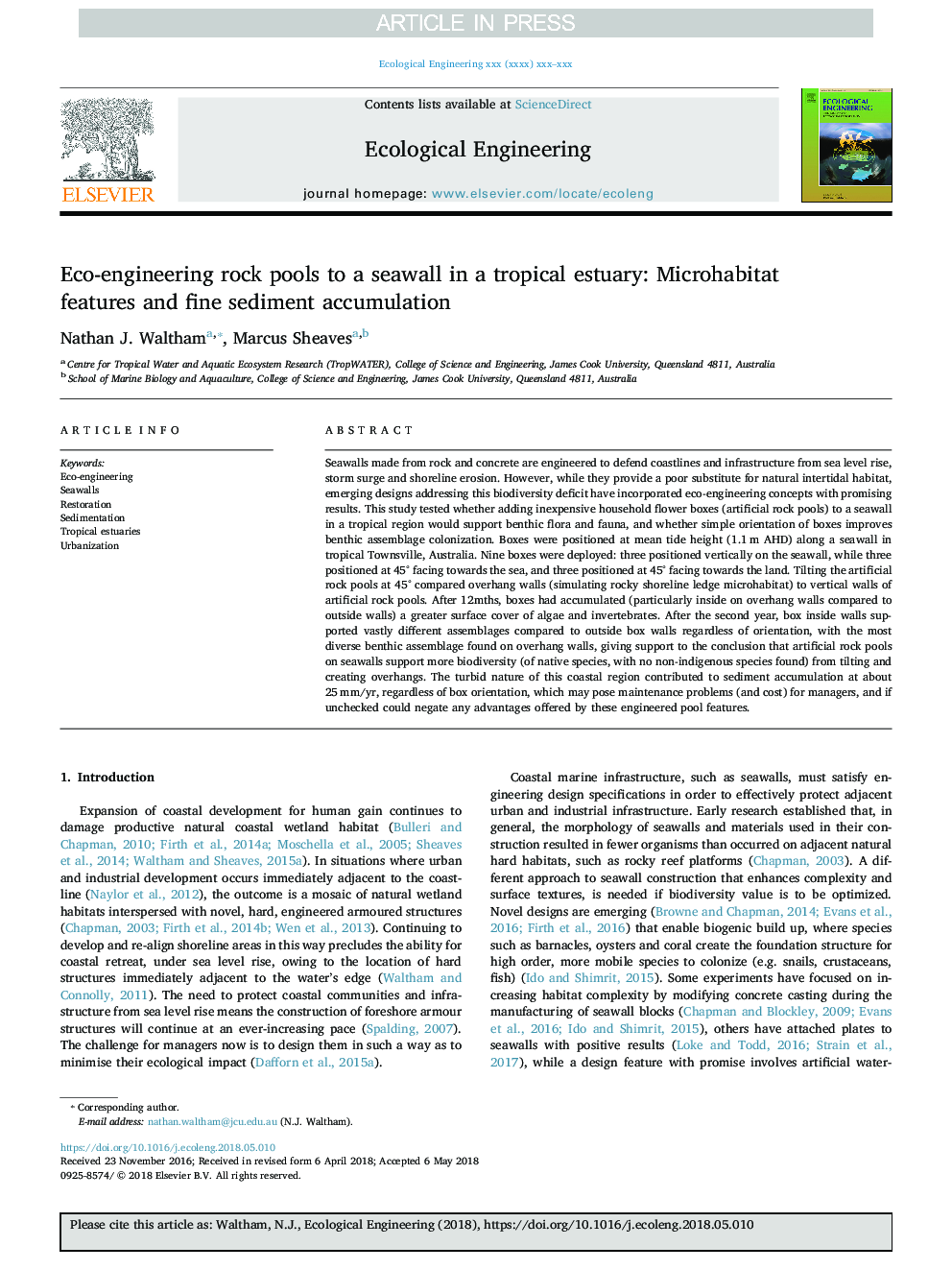| Article ID | Journal | Published Year | Pages | File Type |
|---|---|---|---|---|
| 10110148 | Ecological Engineering | 2018 | 6 Pages |
Abstract
Seawalls made from rock and concrete are engineered to defend coastlines and infrastructure from sea level rise, storm surge and shoreline erosion. However, while they provide a poor substitute for natural intertidal habitat, emerging designs addressing this biodiversity deficit have incorporated eco-engineering concepts with promising results. This study tested whether adding inexpensive household flower boxes (artificial rock pools) to a seawall in a tropical region would support benthic flora and fauna, and whether simple orientation of boxes improves benthic assemblage colonization. Boxes were positioned at mean tide height (1.1â¯m AHD) along a seawall in tropical Townsville, Australia. Nine boxes were deployed: three positioned vertically on the seawall, while three positioned at 45° facing towards the sea, and three positioned at 45° facing towards the land. Tilting the artificial rock pools at 45° compared overhang walls (simulating rocky shoreline ledge microhabitat) to vertical walls of artificial rock pools. After 12mths, boxes had accumulated (particularly inside on overhang walls compared to outside walls) a greater surface cover of algae and invertebrates. After the second year, box inside walls supported vastly different assemblages compared to outside box walls regardless of orientation, with the most diverse benthic assemblage found on overhang walls, giving support to the conclusion that artificial rock pools on seawalls support more biodiversity (of native species, with no non-indigenous species found) from tilting and creating overhangs. The turbid nature of this coastal region contributed to sediment accumulation at about 25â¯mm/yr, regardless of box orientation, which may pose maintenance problems (and cost) for managers, and if unchecked could negate any advantages offered by these engineered pool features.
Related Topics
Life Sciences
Agricultural and Biological Sciences
Ecology, Evolution, Behavior and Systematics
Authors
Nathan J. Waltham, Marcus Sheaves,
